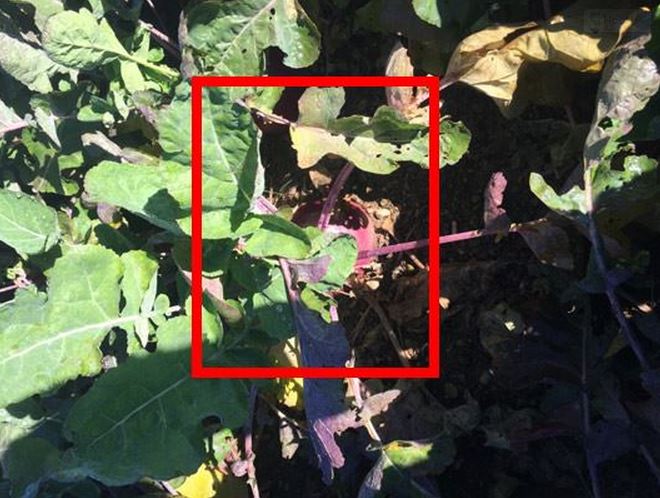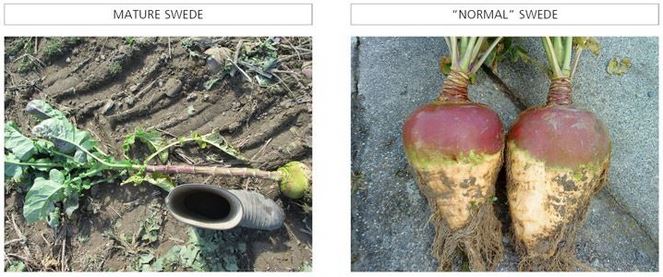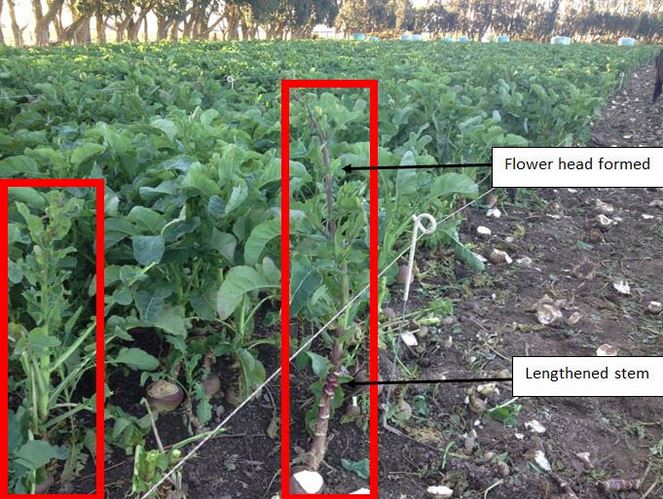



Steps for New Zealand Farmers to Ensure No More Cows Lost Through Mature Swede Illness
Scientists have linked mature swedes with cow fatalities last year and now farmers are advised how to avoid it.Vigilance is needed on any farms being fed swedes, which typically happens through the winter time, often with cows being wintered away from the farm.
This is according to levy board Dairy New Zealand (DairyNZ) in its advice for farmers and their staff.
Experts say farms should watch cows for photosensitivity, weight loss and ill thrift.
What to Look For
- Weight loss and ill-thrift,
- Down-cows that are unresponsive to normal metabolic intervention
- Photosensitivity. Signs of this include:
- cows seeking shade (if available)
- reddening of the udder and skin damage to white skin areas
- restlessness shown by skin twitching; flicking of ears and tail; irritability; and stomping.
- Poor crop utilisation - leaving crop behind, especially the bulb
- Cows not putting on condition despite adequate crop allocation
- What to do if signs appear
- If there is poor crop utilisation (bulbs being left behind) don’t increase allocation as this will increase the intake of leaf. Increase supplement allocation and seek veterinarian advice.
If cows are not putting on condition and you are confident of your crop yield allocation, seek veterinarian advice.
If you see “sick” cows where possible remove the affected animals from crop and provide shade for any animal showing signs of photosensitivity. For the balance of the herd, reduce the swede percentage of the diet by increasing the existing supplement or introducing other feeds. Seek veterinarian advice
If you experience one or two deaths reduce the swede percentage of the diet by increasing the existing supplement or introducing other feeds. Seek veterinarian advice.
If cows have experienced health issues with facial eczema, be extra cautious as they may be more susceptible to ill-health and possibly death from feeding swede crops because of potential residual liver damage.
Advice for Feeding Swedes
Be careful how you feed swede crops and observe the physical characteristics of the swede crop being fed.
The risks associated with feeding swedes to cattle are higher:
- As the percentage of swede in the diet increases
- If more leaf than bulb is consumed
- If swedes are regrowing with warmer weather and enter the reproductive stage.
- Transition stock onto and between different crops well.
- When feeding swedes.
i) Long narrow breaks are better than square breaks.
This will encourage cows to eat equal amounts of bulb and leaf and prevent dominant cows from eating large amounts of leaf.
ii) Transition the cows onto a single crop, where possible, for the duration of winter.
If a new crop species or variety needs to be introduced during winter then take care to transition your cows again between one crop and the next crop.
iii) Use a catch fence in front of the break fence to reduce the impact of any break out of the cows into unrestricted crop areas. Good practice is to always have the next day's break set up as this acts as a catch fence
iv) Ensure a good power source to the break fence and check regularly. If cows are pushing the standards forward introduce a few 'live tip pigtail' standards
The higher the proportion of dry matter that swede contributes to the cow's total diet the higher the likely incidence of ill-health effects in cows. Farmers should watch for animals with sudden weight loss, photosensitivity or if one or two cows die, they should seek veterinary advice immediately.
4. If you are confident your daily swede allocation is correct do not increase the allocation of swedes fed per cow if you observe poor utilisation of crops (especially bulb) or cows appear to be losing condition or not gaining as expected. Increasing the allocation will increase the intake of leaf and could worsen the problem.

At this stage, given the limited knowledge that we have, we suggest that reducing the swede component of the diet to 50 percent or less may help. However, it is vital that farmers continue to monitor the herd and further reduce or eliminate the swede component of the animal's diet if required.
If you have cows that are no longer on swedes but are still experiencing unusual animal health events, we recommend you contact your veterinarian.
Observe the physical characteristics of the crop being fed.
1. As a rule of thumb you should be able to see bulbs through the leaf canopy.
If you cannot see the bulb your cows will be eating a higher proportion of leaf relative to bulb and therefore are at a higher risk of developing ill-health effects.
2. Maturing crops increase the incidence of ill-health effects
An important visual indication that the swede is maturing is when the swede neck lengthens into a stem like structure as illustrated below. In Southland they are commonly known as "bolters".
If you see the stem starting to lengthen with the leaves moving away from the bulb, you need to reduce the amount of swede being fed per cow and increase the supplement to swede ratio to ensure daily dietary allowance remains the same.
If you see mature swedes in your crop closely monitor your stock and reduce the amount of swede being fed. Crops that are flowering have a higher risk and we advise extreme caution.
3. Remember that in late pregnancy and early lactation cows are under more pressure, so are more susceptible to disease and need careful management. Watch for maturing swedes, be careful about the crop to supplement ratio and monitor cows closely for any signs of adverse health effects.
What to do if signs appear
If there is poor crop utilisation (bulbs being left behind) don’t increase allocation as this will increase the intake of leaf. Increase supplement allocation and seek veterinarian advice.
If cows are not putting on condition and you are confident of your crop yield allocation, seek veterinarian advice.
If you see “sick” cows where possible remove the affected animals from crop and provide shade for any animal showing signs of photosensitivity. For the balance of the herd, reduce the swede percentage of the diet by increasing the existing supplement or introducing other feeds. Seek veterinarian advice
If you experience one or two deaths reduce the swede percentage of the diet by increasing the existing supplement or introducing other feeds. Seek veterinarian advice.
If cows have experienced health issues with facial eczema, be extra cautious as they may be more susceptible to ill-health and possibly death from feeding swede crops because of potential residual liver damage.




